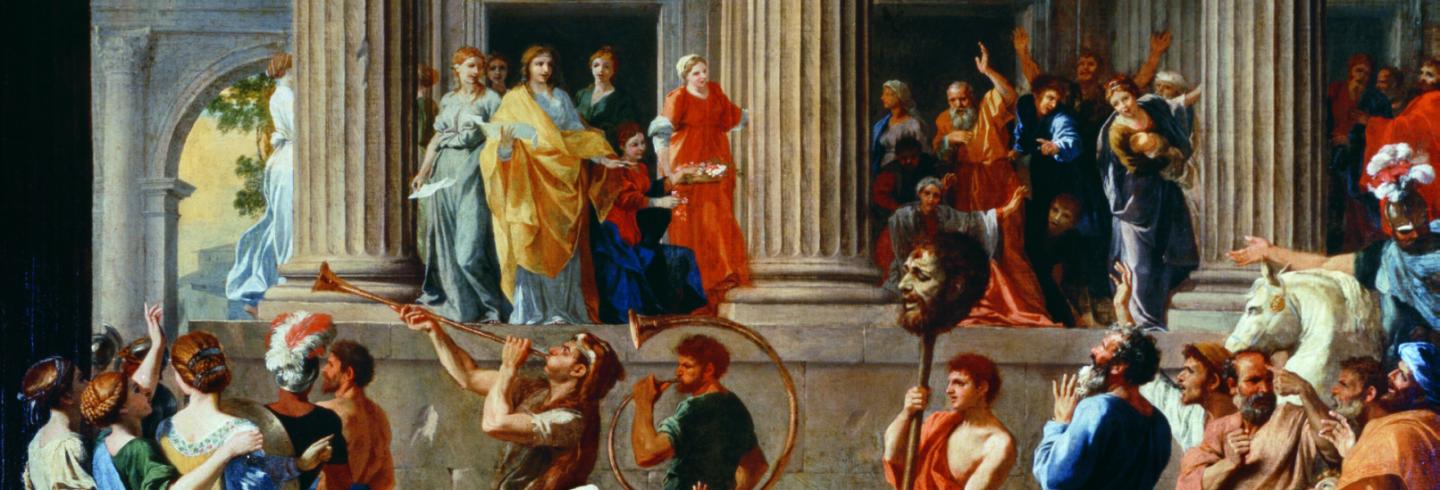(THIS ARTICLE IS MACHINE TRANSLATED by Google from Norwegian)
The English book historian and former situationist TJ Clark's latest book, Heaven on Earth: Painting and the Life to Come, is an immensely complicated and ambiguous attempt to reconcile the painting with an anti-utopian utopian force that keeps every escape into the future in the ave, but at the same time opens the door to a different world. Painting as the dream of a place where the world is different, but without the viewer being presented with a political or aesthetic-political program to be realized or implemented. As Clark puts it on Brugel's Slaraffenland, painting offers "a model for thinking alternative worlds – thinking them, realizing them, dwelling on their substance and details – without anyone who thinks they 'believe' it." Clark is interested in this duality of resistance and impossibility, with the painting itself canceling or suspending the transfiguration just about to happen.
The silence of the painting
The book consists of analyzes of five paintings by Giotto, Bruegel, Poussin, Veronese and Picasso. Long and dense analyzes in which Clark constantly painstakingly and very self-consciously describes elements in the paintings, all of which have to do with the dialectic between the lateral and the lateral, the divine and the earthly in all its materiality. He stays long by small details in the paintings and returns to them again and again. The analyzes are in the best sense characterized by a great love for the paintings. Clark can't get enough of them and never finishes them. He constantly sees new details or small offsets that need to be formulated in a different way or revert to past analyzes and change them, linguistically differentiating them. In so doing, the book is a defense speech for painting and what Clark calls "painting mute": the fact that painting opposes and escapes language, thereby opening a space where ambiguities and paradoxes exist.
The analyzes are characterized by a great love for the paintings.
For Clark, the five paintings are to be understood as opposites to the silly images that characterize the acting community. Debord's plays community analysis is an important reference for Clark. In the play society, pictorial domination forms a torn class society together. Pictures, slogans, brands and memes are constantly produced and circulated, laying like a thin varnish over an increasingly eroded existence. The play's images are easily readable, a wall is equal to American greatness, a pair of Gucci shoes are cool, and so on. The paintings Clark analyzes resist a simple reading, they cannot be reduced to slogans or one-liners.
In Giotto's painting Joachim's dream for example, we see an angel fly down to Joachim, who is sleeping in front of a small hut. The angel will announce that Joachim's wife will give birth to Mary, who will later give birth to Jesus. The painting shows the sudden appearance of celestial beings, the gray mountain and the blue sky opens. Time seems to be stalling as the angel dives towards a sleeping or introverted Joachim. The two worlds are separate, yet interconnected. The angel's room, the blue sky, and Joachim's room, the gray mountain and the hut, are two worlds, but we see an opening materialize in color, pigment and water. The world is being transformed. We also see the black interior of Joachim's cabin, a kind of modernist abstraction avant la lettre, we see the animated folds in his tunic at the bottom of the fresco, and we see the angel, which is at once supernatural and concrete visible, painted on the wall. Joachim's dream raises endless questions for Clark, and the paintings he analyzes in the book thus become a counter-paradigm to the play's easy-to-read silly images.

Settlement
In other words, it is about seeing. The book is the preliminary culmination of Clark's showdown with the contextualizing art history that he himself helped launch in the early 1970s with the books Image of the People: Gustave Courbet and the 1848 Revolution og The Absolute Bourgeois: Artists and Politics in France, 1948-1851. The criticism of the then-dominant biographical and formalist art history in favor of a Marxist social-historical analysis focusing on the contemporary reception of works of art and on the class nature of art has ended up as a caricature, according to Clark, simply pointing out the class nature of art and forgetting, that the artwork is also a picturesque event. Of course, any cultural document is a testimony to barbarism, as Walter Benjamin put it, but it's also more than that. And it is this more that Clark is trying to project in his analyzes.
Clark is left with an inadequate anti-utopia.
The analysis of the paintings concludes with a coda entitled "For a Left Without a Future," in which Clark outlines the idea of a left wing saying goodbye to its big-leaning modernist progressive faith. The analyzes of the paintings are Clark's contribution to the formulation of a subdued and tragic policy that takes the cut of 20th century mass murder and state terror in the name of socialism. A left-wing policy that does not look forward, which is not prophetic, but which scales down and is reformist, which does not politicize capitalism, but fails to attack it, instead confronting things that it can actually do something about. It is thus a defense of tragic reformism, Clark puts forward. According to Clark, the paintings are understood as a kind of example of such mature politics. They show us glimpses of another world, but without acting as inspirational battle cry. There is nothing to put in place or any program to realize, no five-year plans or big promises to be fulfilled. There is this world, but we may imagine it in other ways. That's what the paintings do, according to Clark.
The question is whether Clark goes so far in his criticism of the left and "the reckless criticism of everything existing" (Marx) that he ends up losing the revolutionary in the sense of the idea of abolishing the current state. Clark prefers to retire. But back to what exactly? The hell of capitalist modernization does not seem to have become less intrusive in the 21st century, and the climate crisis calls for radical solutions rather than tragic reformism. When Clark tries to save the left by pleading for maturity, he takes the life of revolutionary criticism and is left with an inadequate anti-utopianism. The juxtaposition between adult maturity and youthful bloodshed, paradoxically, ends up closing the paintings he has otherwise opened our eyes to. The dialectic between this world and the transformation of it disappears as Clark moves from political art history to politics.


